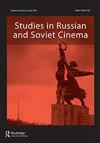The future is (still) bleak: the lives of youth on Russia’s margins in Vasilii Pichul’s Little Vera and Nataliia Meshchaninova’s The Hope Factory
IF 0.4
0 FILM, RADIO, TELEVISION
引用次数: 0
Abstract
ABSTRACT Through a comparative analysis of the films Little Vera by Vasilii Pichul (1988) and The Hope Factory by Nataliia Meshchaninova (2014), the article examines the representation of youth living at the margins of Soviet/Russian society economically, socially and geographically. These films are connected not only by their narrative focus on young people coming of age amid political change, but by their utilisation of cinematic and narrative styles associated with the chernukha genre that emerged in late 1980s and early 1990s in Soviet cinema. Both films offer intimate and naturalistic portrayals of Soviet/Russian youth to explore themes including substance abuse, sex, trauma and young people’s quest to escape the confines of their current lives and create a future for themselves in their ‘new’ Russia.未来(仍然)黯淡:瓦西里·皮楚尔的《小维拉》和纳塔利娅·梅沙尼诺娃的《希望工厂》中俄罗斯边缘青年的生活
摘要本文通过对瓦西里·皮楚尔(1988)和纳塔利娅·梅沙尼诺娃(2014)的电影《小维拉》的比较分析,考察了生活在苏俄社会边缘的青年在经济、社会和地理上的表现。这些电影之间的联系不仅在于它们对政治变革中成年的年轻人的叙事关注,还在于它们利用了与20世纪80年代末和90年代初苏联电影中出现的切尔努卡类型相关的电影和叙事风格。这两部电影都对苏联/俄罗斯的年轻人进行了亲密和自然主义的刻画,探讨了药物滥用、性、创伤以及年轻人如何逃离当前生活的束缚,在他们的“新”俄罗斯为自己创造未来等主题。
本文章由计算机程序翻译,如有差异,请以英文原文为准。
求助全文
约1分钟内获得全文
求助全文

 求助内容:
求助内容: 应助结果提醒方式:
应助结果提醒方式:


